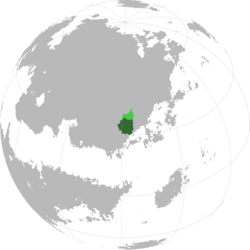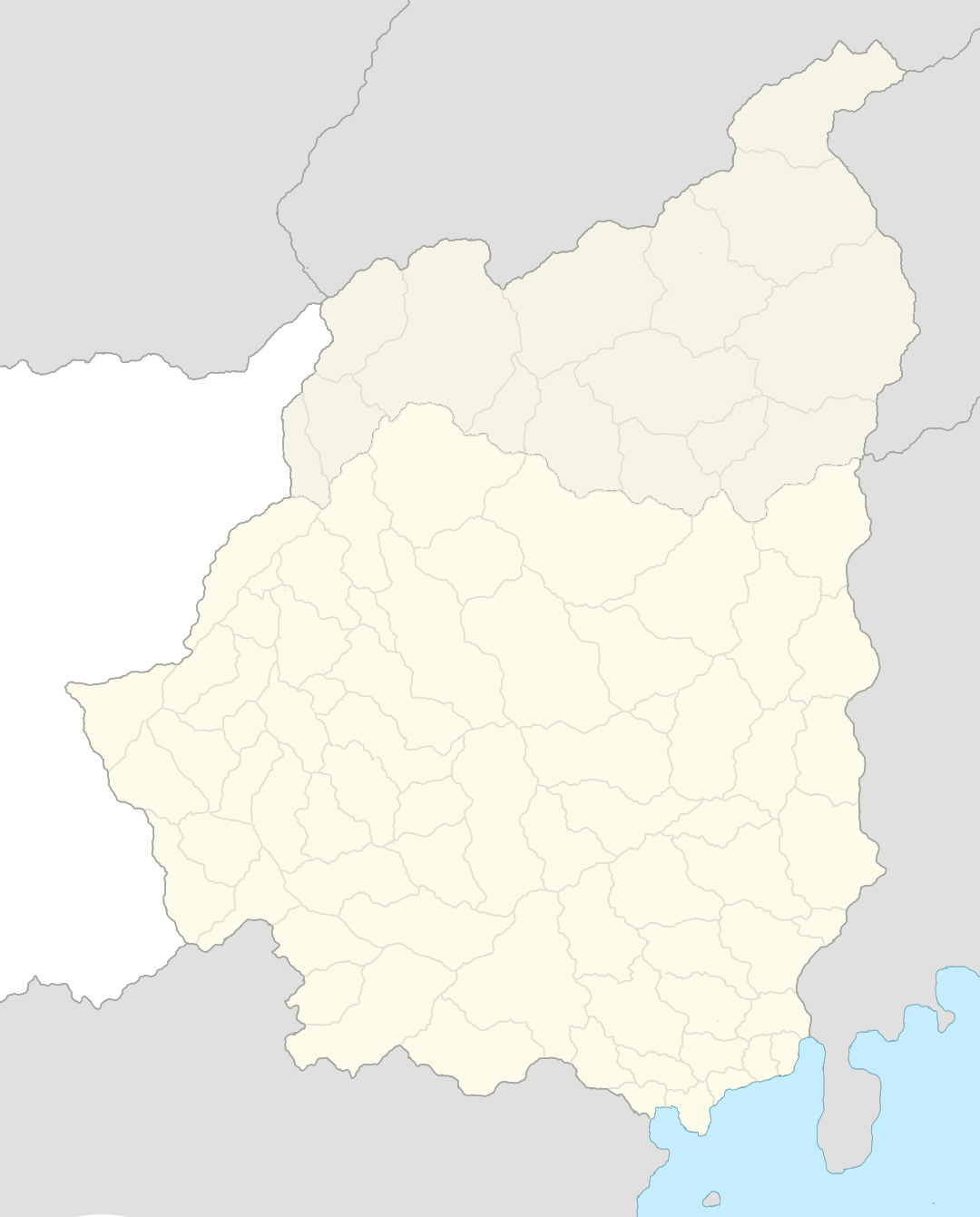Difference between revisions of "Sarmai"
(redid government, added economy and symbol stuff) |
m |
||
| Line 43: | Line 43: | ||
|leader_title2 = Premier <!--(could be "Vice President", otherwise "Prime Minster", etc, etc)--> | |leader_title2 = Premier <!--(could be "Vice President", otherwise "Prime Minster", etc, etc)--> | ||
|leader_name2 = | |leader_name2 = | ||
|leader_title3 = Leader of the SPF <!--(up to six distinct leaders may be included)--> | |||
| | |||
|leader_name6 = | |leader_name6 = | ||
|legislature = All Sarmayans' Supreme Council <!--Name of the country/territory's governing body, e.g. "Parliament", "Congress", etc--> | |legislature = All Sarmayans' Supreme Council <!--Name of the country/territory's governing body, e.g. "Parliament", "Congress", etc--> | ||
| Line 76: | Line 75: | ||
|population_density_sq_mi = 31 | |population_density_sq_mi = 31 | ||
|population_density_rank = | |population_density_rank = | ||
|GDP_PPP = | |GDP_PPP = 474 million <!--(Gross Domestic Product from Purchasing Power Parity)--> | ||
|GDP_PPP_rank = | |GDP_PPP_rank = | ||
|GDP_PPP_year = | |GDP_PPP_year = | ||
|GDP_PPP_per_capita = 13,094 | |GDP_PPP_per_capita = 13,094 | ||
|GDP_PPP_per_capita_rank = | |GDP_PPP_per_capita_rank = | ||
|GDP_nominal = | |GDP_nominal = 181 million | ||
|GDP_nominal_rank = | |GDP_nominal_rank = | ||
|GDP_nominal_year = | |GDP_nominal_year = | ||
Revision as of 21:32, 11 April 2022
| All Sarmayan Peoples' Republic |
||||||
|---|---|---|---|---|---|---|
|
||||||
Claimed areas in light green, controlled areas in dark green.
|
||||||
| Official languages | None | |||||
| Recognised national languages | a bunch | |||||
| Recognised regional languages | too many | |||||
| Demonym | Sarmayan | |||||
| Government | Unitary Balkist one party parliamentary republic | |||||
| - | President | |||||
| - | Premier | |||||
| - | Leader of the SPF | {{{leader_name3}}} | ||||
| Legislature | All Sarmayans' Supreme Council | |||||
| Area | ||||||
| - | 517,288 km2 199,726 sq mi |
|||||
| Population | ||||||
| - | estimate | 36.300.000 | ||||
| - | census | 36.210.160 | ||||
| - | Density | 80/km2 31/sq mi |
||||
| GDP (PPP) | estimate | |||||
| - | Total | 474 million | ||||
| - | Per capita | 13,094 | ||||
| GDP (nominal) | estimate | |||||
| - | Total | 181 million | ||||
| - | Per capita | 4,998 | ||||
| Gini | 38 medium |
|||||
| HDI | 0.79 high |
|||||
| Time zone | +6 | |||||
Sarmai (Language: Country [saː.rmɛ]), also known as Sarmay, officially the All Sarmayan Peoples' Republic, is a country located in Parshita, bordered by Azey to the south, Kaisen to the east. To the north lies the disputed territory of Zindarr, the majority of which Sarmai claims as its own territory.
Being inhabited for millennia, it was settled by Tiengic peoples around the 2nd millennium BCE, followed by more recent Kame migrations.
During its history, it has been occupied by most regional empires, including the Ughmar Khaganate, Sunrise Horde, Blob Empire and most recently by the Azey gunpowder empire in the 1700s. Following it's collapse, Sarmai first became a united entity in the 1840s under a monarchy, which would become a republic by the turn of the century. This republic was unstable however, and in 1921 it would be overthrown in the Sarmayan Revolution, as part of the greater White Mountain War. This new regime would survive the anti-Balkist revolutions across East Miraria despite its high instability at times, and nowadays the country is one of the two remaining officially Balkist states, along with Farmosh, both having followed a policy of liberalisation in modern times.
Just like other Parshitan nations, Sarmai is extremely linguistically diverse, with it holding about 40 to 50 languages of Tiengic, Kame, Paroan and East Mirarian origins. None of these are officially considered official languages, but some of them have become dominant in government matters, mostly the Tiengic Nyeahi and others.
Etymology
The name Sarmai originates from Old Nyeaghi /sa̤ːrmɛː/, meaning "awl valley".
History
Geography
Geology
Climate
Biodiversity
Politics
Sarmay is a one-party state, with the only legal party being the Sarmayan Popular Front, which has full control over the government, and who can access it. Albeit, in more recent years attempts have been made to follow a more democratic path in sporadic occasions. It is the only constitutionally Balkist state in Sahar.
Government
The Sarmayan constitution sets the separation of branches of government: - The legislative is handled by the All Sarmayan Supreme Council (ASSC). This 360 seated, unicameral chamber is the source of all authority in the government, as it elects both the president and the premier. Candidates, either put forward by the SPF or by independent candidates endorsed by it, are voted into parliament from the 69 provinces, each of which serves as a multimember constituency. De facto, it is often classed as a rubber-stamp by international observers. - The executive is handled by both the president and premier. The president, elected by the ASSC, is the head of state, and his main duty is being the representative of Sarmai in foreign affairs. However internally, he is also tasked with defending the constitution, as well as national integrity and independence: he is the commander-in-chief of the armed forces, chairman of the Union Defense Council, and is the one to declare states of emergency and military mobilisations. In addition, he has the power to ask the ASSC to dismiss the prime minister or members of his cabinet (although he cannot directly propose legislation), as well as more symbolic gestures such as calling referenda, granting pardons and ascents to government and military officials. The premier is chosen by the president with advice from the ASSC, and is the head of government. He assembles his cabinet with confirmation from the ASSC, and handles day-to-day guvernamental operations. - A de-jure independent judiciary.
Administrative divisions
Sarmai is divided into 69 provinces, 85 in total if the official subdivisions of South Zindarr put forward by the government are counted.
Each province has its own popularly elected council, which take care of local affairs.
Foreign relations
Military
Economy
Sarmai has a mixed-economy ever since the Balkist takeover. The Sarmayan Government, via the Ministry of Economy and Development Planning, exhorts a dirigiste policy onto the economy. Sarmai is an industrialised economy, with the workforce split roughly 30%/40%/30% on the first, second and third sectors respectively, which apport roughtly 10%, 35% and 55% of the national GDP.
Transport
Energy
Science and technology
Tourism
Demographics
Ethnic groups
Urbanisation
Language
Sarmay has no official language (yes I will figure out how to handle this)
Education
Healthcare
Religion
Culture
Heritage
Architecture
Literature
Art
Music
Theatre
Film
Cuisine
Sport
Symbols
The national emblem of Sarmay represents the strength in unity of the various groups forming the nation, with the 5 torches each indicating a historic region. Their unison allows the fire that is Sarmay to remain strong. It also features a plumeria, a symbol common to all core Parshitan cultures.



